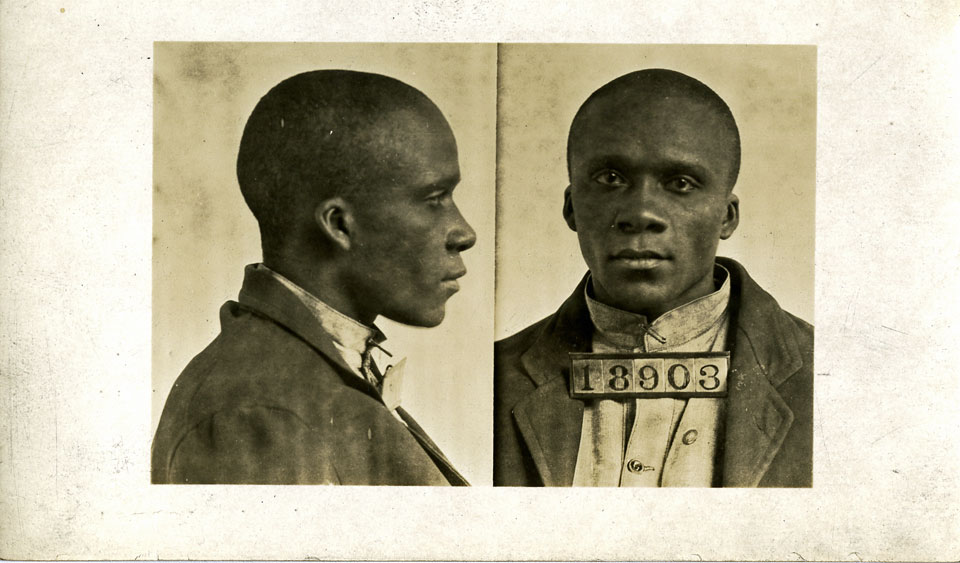This is the latest entry in a series of posts highlighting inmate photographs in the records of the Virginia Penitentiary. Ernest Harper, the subject of this week’s post, brutally murdered an unrequited love interest and was sentenced to 20 years in the penitentiary. Eighteen months into his sentence, Harper escaped in dramatic fashion and was never recaptured.
On Thursday morning, 2 November 1922, Ernest Harper, armed with a revolver, burst into the room of Mrs. Alice Moore in Norfolk. He shot Moore seven times, emptying his weapon; she was able to run down the stairs but died in the doorway. Harper was quickly captured. His motive was jealousy. Harper had fallen in love with Moore, who was estranged from her husband, Luther Moore. Alice rejected Harper’s advances and the Moores had recently reconciled. After learning the news, Harper shot Moore in a jealous rage. In May 1923, Harper was convicted of first degree murder and sentenced to 20 years in the Virginia Penitentiary.
Upon Harper’s arrival at the Penitentiary on 23 May 1923, he was placed in the cell of Frank McGee, who was serving a 15-year sentence for housebreaking. The two cell mates planned one of the most sensational and well-planned escapes in penitentiary history. “Eighteen inches of steel-re-enforced concrete, a three-quarters of an inch steel plate, sundry steel bars and a twenty-foot wall,” the Richmond Times-Dispatch reported on 10 November 1924, “proved no barriers” for Harper and McGee as they escaped from the penitentiary on 8 November 1924. The convicts planned their escape for weeks if not months. Using scrap iron from the penitentiary’s factory and blacksmith shop, the two made their own tools – chisels and pick axes – to drill through the concrete and steel floor of their cell. They used pads to muffle the noise of their work and worked between the hours of five and seven p.m. During that time, prisoners were permitted to have music in the cell building. The sound of prisoners playing instruments and listening to music provided excellent cover. Harper and McGee covered the hole in their floor with a rug.
After the two men broke through the floor of their cell, they lowered themselves into a basement shower room and went to the prison yard. The prisoners scaled a 15-foot iron fence and used lumber and rope to scale the 20-foot brick wall on Belvidere Street and reach freedom. When penitentiary officials discovered the escape, they began an intensive manhunt but neither prisoner was immediately captured. McGee was finally apprehended on 18 May 1927; he was discharged on 29 April 1932. Ernest Harper was never found.
-Roger Christman, LVA Senior State Records Archivist
















